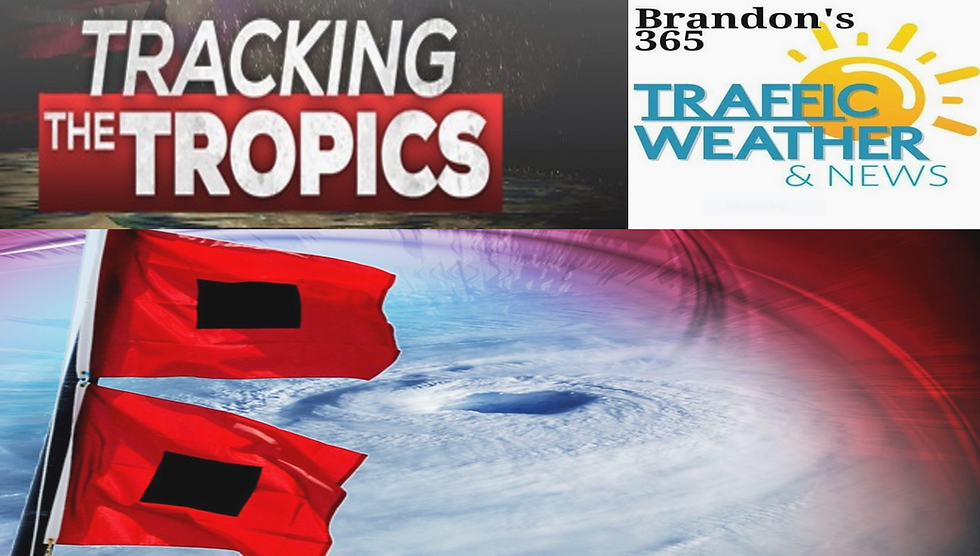Isaias could make landfall in the Carolinas. Flood and wind threat ahead for NC and SC.
- Brandon Shipp

- Aug 2, 2020
- 3 min read










ISAIAS STRENGTHENS SLIGHTLY WHILE MOVING NORTH-NORTHWESTWARD JUST OFFSHORE THE EAST-CENTRAL FLORIDA COAST HURRICANE WATCH AND STORM SURGE WARNING ISSUED FOR PORTIONS OF THE CAROLINAS
- A Storm Surge Warning is in effect for... * Edisto Beach South Carolina to Cape Fear North Carolina - A Storm Surge Watch is in effect for... * Cape Fear to Duck North Carolina * Pamlico and Albemarle Sounds - A Hurricane Watch is in effect for... * South Santee River South Carolina to Surf City North Carolina - A Tropical Storm Warning is in effect for... * Sebastian Inlet Florida to Ocracoke Inlet North Carolina - A Tropical Storm Watch is in effect for... * Ocracoke Inlet North Carolina to Watch Hill Rhode Island * Pamlico and Albemarle Sounds * Chesapeake Bay * Tidal Potomac River * Delaware Bay * Long Island and Long Island Sound
Interests elsewhere along the northeast coast of the United States should monitor the progress of Isaias. Additional watches or warnings may be required tonight or early Monday.
Hurricane conditions are be possible in the watch area in South and North Carolina Monday night and early Tuesday.Tropical storm conditions will spread northward within the Tropical Storm Warning area from Florida to North Carolina through Monday night. Tropical storm conditions are possible in the Tropical Storm Watch area beginning on Tuesday.
The combination of a dangerous storm surge and the tide will cause normally dry areas near the coast to be flooded by rising waters moving inland from the shoreline. The water could reach the following heights above ground somewhere in the indicated areas if the peak surge occurs at the time of high tide... - Edisto Beach SC to Cape Fear NC...2-4 ft - Sebastian Inlet FL to Edisto Beach SC...1-3 ft - North of Cape Fear NC to Kiptopeke VA including Pamlico Sound, - Albemarle Sound, Neuse River, Pamlico River, Chesapeake Bay, and the Tidal Potomac River...1-3 ft-
At 5 p.m. EDT Sunday August 2nd, the center of Tropical Storm Isaias was located about 65 miles (105 km) southeast of Cape Canaveral Fla. It's moving toward the north-northwest near 9 mph (15 km/h), and this general motion is expected to continue through tonight. A turn toward the north and north-northeast along with an increase in forward speed is anticipated on Monday and Tuesday. On the forecast track, the center of Isaias will pass just to the east of the Florida east coast through tonight. The center of Isaias will move offshore of the coast of Georgia and southern South Carolina on Monday, move inland over eastern North Carolina Monday night and move along the coast of the mid-Atlantic states on Tuesday. Tornadoes will be possible in the Carolinas and very heavy rainfall especially for Myrtle Beach, Charleston, Garden City, Fayetteville, Wilmington, Cherry Grove, Oak Island, Oracoke Island, Raliegh, and Kitty Hawk.
Data from the aircraft and the Melbourne, Florida, Doppler radar indicate that maximum sustained winds have increased to near 70 mph (110 km/h) with higher gusts. Tropical-storm-force winds extend outward up to 115 miles (185 km) from the center. A weather station at Sebastian Inlet, Florida, recently measured a wind gust of 49 mph (80 km/h). Some fluctuations in strength will be possible during the next 36 hours, but Isaias is expected to be a strong tropical storm when it reaches the coast of northern South Carolina and southern North Carolina Monday night. Slow weakening is forecast after Isaias makes landfall in the Carolinas and moves across the U.S. mid-Atlantic region late Monday and Tuesday.
Heavy rainfall from Isaias will continue to result in potentially life-threatening flash flooding in the Northwestern Bahamas through tonight. Flash and urban flooding, some of which may be significant in the eastern Carolinas and the Mid-Atlantic, is expected through midweek along and near the path of Isaias across the East Coast of the United States. Widespread minor to isolated moderate river flooding is possible across portions of the Carolinas and the Mid-Atlantic.






Comments